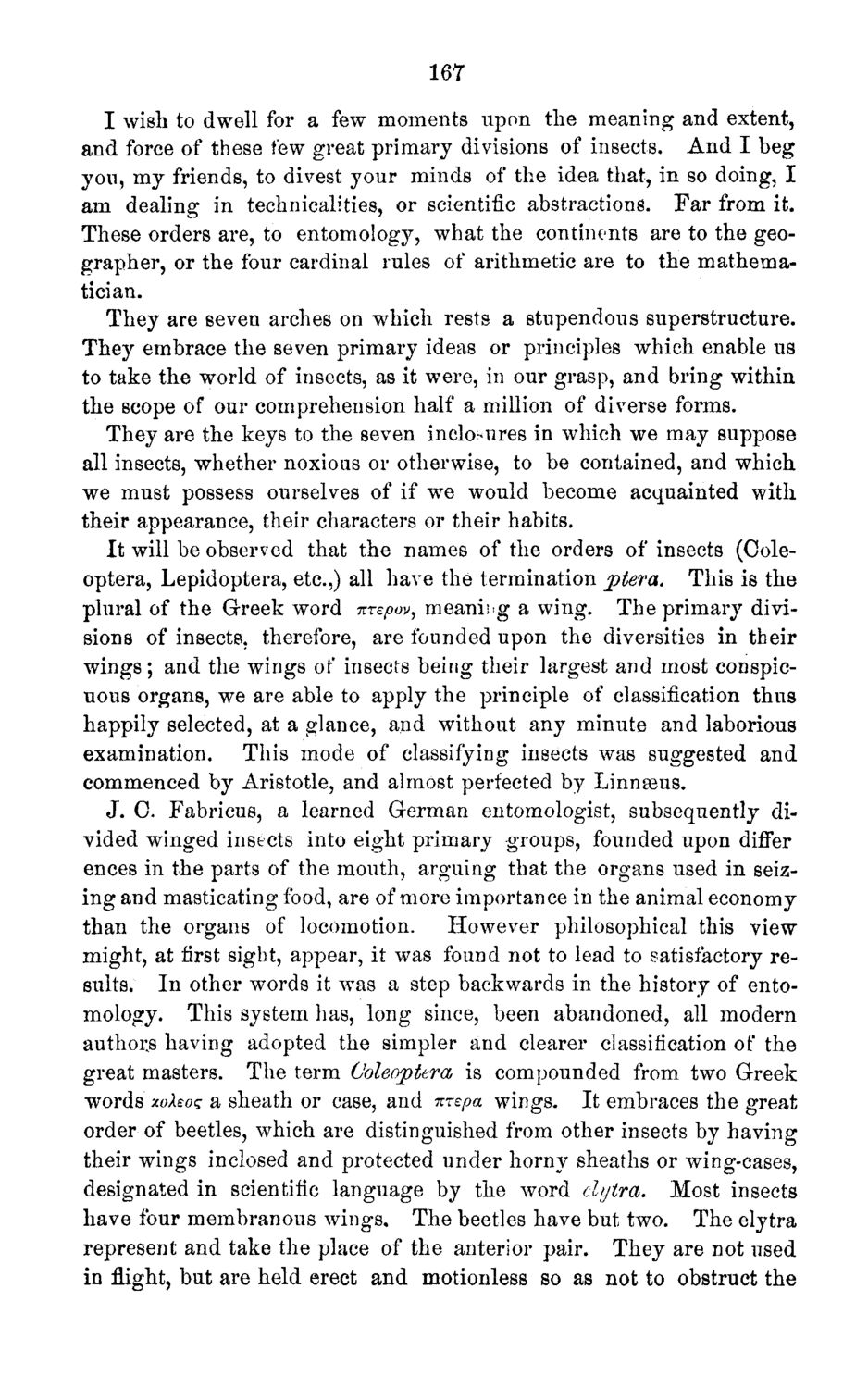| |
| |
Caption: Board of Trustees Minutes - 1871
This is a reduced-resolution page image for fast online browsing.

EXTRACTED TEXT FROM PAGE:
167 I wish to dwell for a few moments upon the meaning and extent, and force of these few great primary divisions of insects. And I beg yon, my friends, to divest your minds of the idea that, in so doing, I am dealing in technicalities, or scientific abstractions. Far from it. These orders are, to entomology, what the continents are to the geographer, or the four cardinal rules of arithmetic are to the mathematician. They are Beven arches on which rests a stupendous superstructure. They embrace the seven primary ideas or principles which enable us to take the world of insects, as it were, in our grasp, and bring within the scope of our comprehension half a million of diverse forms. They are the keys to the seven inclo-ures in which we may suppose all insects, whether noxious or otherwise, to be contained, and which we must possess ourselves of if we would become acquainted with their appearance, their characters or their habits. It will be observed that the names of the orders of insects (Coleoptera, Lepidoptera, etc.,) all have the termination ptera. This is the plural of the Greek word Tzrzpov, meaning a wing. The primary divisions of insects, therefore, are founded upon the diversities in their wings; and the wings of insects being their largest and most conspicuous organs, we are able to apply the principle of classification thus happily selected, at a glance, and without any minute and laborious examination. This mode of classifying insects was suggested and commenced by Aristotle, and almost perfected by Linnaeus. J. C. Fabricus, a learned German entomologist, subsequently divided winged insects into eight primary groups, founded upon differ ences in the parts of the mouth, arguing that the organs used in seizing and masticating food, are of more importance in the animal economy than the organs of locomotion. However philosophical this view might, at first sight, appear, it was found not to lead to satisfactory results. In other words it was a step backwards in the history of entomology. This system has, long since, been abandoned, all modern authors having adopted the simpler and clearer classification of the great masters. The term Ooleoptera is compounded from two Greek words xoXsoq a sheath or case, and Tirepa wings. It embraces the great order of beetles, which are distinguished from other insects by having their wings inclosed and protected under horny sheaths or wing-cases, designated in scientific language by the word elytra. Most insects have four membranous wings. The beetles have but two. The elytra represent and take the place of the anterior pair. They are not used in flight, but are held erect and motionless so as not to obstruct the
| |